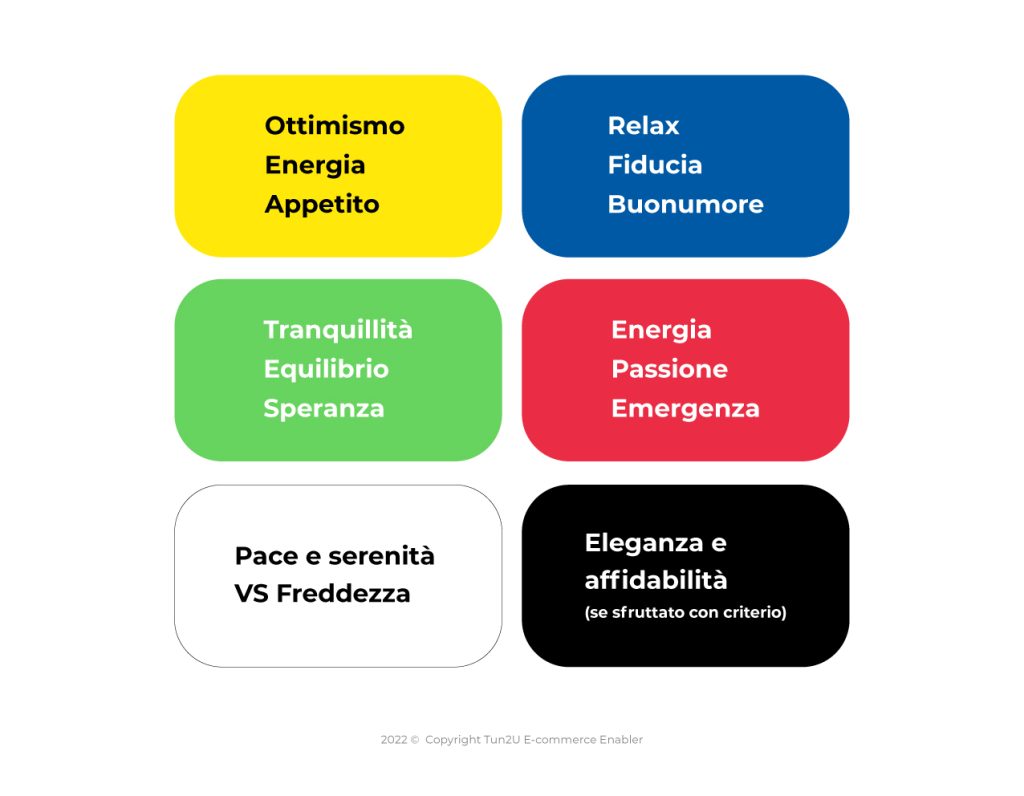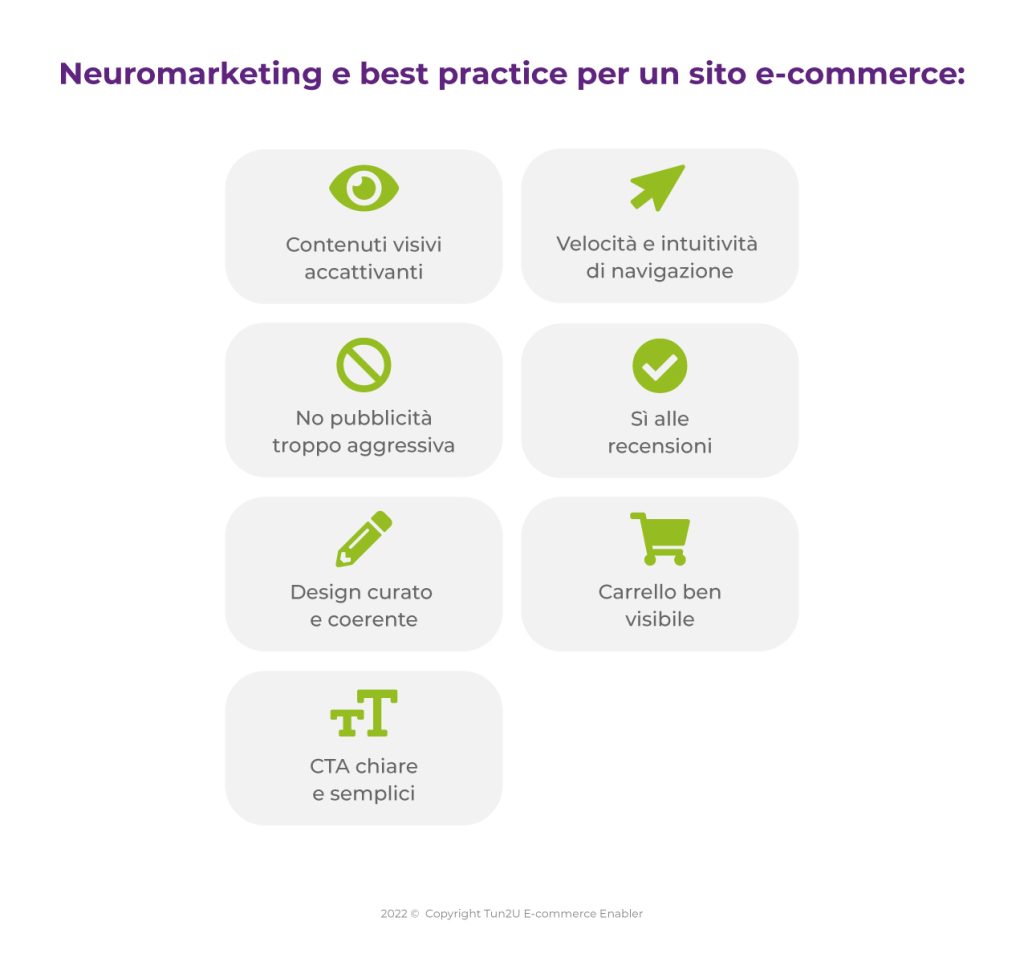What is neuromarketing?
Is it possible to predict the interests of consumers?
Can visual language influence marketing strategy?
With the right tools, through careful analysis and with the help of special scientific procedures, it is even possible to anticipate and ‘guide’ users’ actions both online and offline.
Neuromarketing-i.e., “the study of the brain mechanisms that determine choices related to the consumption of goods“-enables the evaluation of unconscious reactions and audience engagement. It is, therefore, a true mix of marketing and neuroscience.
An example? A well-known brand of potato chips in pouches conducted a neuromarketing study to find out the tastes of its consumers and what had or had not prompted them to buy the product. The result was that many of the people who liked the chips did not buy them because they thought the product was very processed.
The ploy was to change the packaging, adding an image of a natural product and using a color reminiscent of the earth.
When they say ‘a picture is worth a thousand words’
Color is certainly an aspect that contributes so much to the allure of the product that in some cases it succeeds in eliciting certain feelings based on well-structured features. When a user browses a website, in fact, colors can influence as much as 60 percent of his or her behavior. From yellow to blue, each color can stimulate-in most cases-a specific mood.
Yellow, for example, is among the quintessential warm colors and exudes a sense of optimism. According to some analyses, it is among the tones that would most stimulate appetite; it is no coincidence, moreover, that it is the ‘chosen one’ by a very famous American fast food chain.
Blue conveys ‘good vibes’ and, for this very reason, is highly touted by corporations and social platforms.
Red, in all its hues, is not only the color of passion but also of energy and is exploited to stimulate immediate, impulsive buying, as in the case of sales.
Green is associated with hope and is able to instill tranquility, harmony and calm.
White can be “a double-edged sword” since in addition to conveying serenity and peace it can risk being too cold, impersonal, and aseptic.
Black certainly is an elegant and eye-catching tone, but it must be handled with awareness. Especially on the graphic side, one must be able to skillfully balance the possible combination with other colors.

What do users think about when they surf online?
What do users think when they are on an e-commerce platform? On an emotional level, a user would determine in a very few seconds whether an e-commerce is trustworthy or not. Specifically, the brain would take as little as 2.5 seconds to form an idea regarding the reliability of the online store.
Trustworthiness and engagement are among the main motivations for conversion, and from these factors, the primary diktat is that: “doesthe e-commerce site inspire trust?”
This is precisely where the concept of Neuromarketing comes in!
Neuromarketing: from theory to practice
Neuromarketing is a discipline that studies the behavior of the human brain toward a purchase decision. It is basically a science using scientific procedures-such asEye Tracking-employed to support the measurement of emotions, attention and memory levels by consumers.
Using some of these technologies, neuroscience studies people’s reactions to specific stimuli, which provide insight into which areas of the brain are activated in the buying process.
Which area of the brain most influences purchase? The emotional one. Whenever a user lands on an Internet site, certain parts of the brain are activated that “push” the individual to experience very specific feelings, including acceptance or rejection toward the platform in question. It takes very little to make the public decide whether the appearance of an online store encourages-or not-the browsing and purchasing decision.
Of course, it should not be forgotten that consumers also make rational and thoughtful purchases. As a result, it is essential to structure and plan marketing strategies that are elaborated ad hoc for goals established at the outset, such as increasing online sales. Neuromarketing techniques prove to be very effective in this and help arouse emotions in consumers, increasing the level of loyalty to the store.
Neuromarketing: what to do and what NOT to do at all
There are some neuromarketing best practices that might be useful to those who already have an e-commerce or are planning to implement one:

Captivating visual content: graphics and images are able to evoke emotions, feelings and, consequently, determine different actions. We are in the presence of one of the main stimuli related to user decisions.
Speed, intuitiveness, and ease of navigation: a good, simple UX/UI increases the likelihood of purchase. That is why if a site is intuitive, the user is able to navigate it with pleasure and for longer.
The shopping cart must be clearly visible-most e-commerce stores place it in the upper right-hand corner.
No to ‘intrusive’ advertising: to ‘aggressive’ advertising the user reacts quite negatively, most often even leaving the site.
Yes to reviews: they generate trust and confidence in users, testimonials are the pillars of e-commerce.
Call to action: CTAs should be short and concise, better to focus on clear graphics and simple language.
Design care: the eye also wants its part, the design should be clean and clear, less is more!
The daunting task is to base the strategy of ‘e-commerce on the needs of users, finding out what makes them make one purchase instead of another.
Undoubtedly an essential factor is to arouse an emotion, perhaps by telling a story in which users can mirror themselves. At the same time, three basic details such as simplicity, intuitiveness and consistency should not be overlooked.
